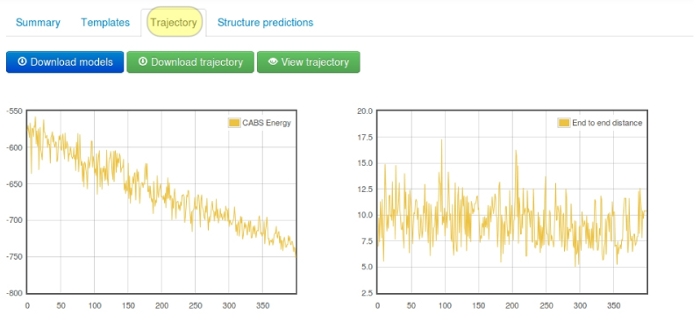

Whilst the dataset deployed in the example above is specific to the scientific problem being addressed, the concepts addressed here are in fact quite general to the area of quantum computation in molecular sciences.
#JMOL SIMULATION FREE#
The computational procedures also allow a potential energy surface for putative reactions of the molecule to be computed, and from this thermodynamic quantities such as activation free energies of reaction ΔG ‡ 298 to be estimated in order to provide estimates of the probable lifetime of the molecule and the rates of its reactions. In this particular case, it is the strength of bonds to the element helium that are the topic of the article. From this distribution, conclusions regarding the length and strength of individual bonds in the molecule can be assessed. The coordinates for these atoms can then be associated with computed wavefunctions for the entire system, which in turn defines the electron density distribution ρ(r) in the molecule. The scope applies to discrete covalently bound molecules or ionic systems,Ĭontaining up to around 250 atoms for any atom in the periodic table. Obtaining molecular coordinates in this manner is a general procedure, applied across the molecular sciences. Published article 1 entitled "The rational design of helium bonds", in which the scientificĬonclusions derive from a sequence of quantum chemical calculations at various theoretical levels. This data set descriptor takes as its scientific context a dataset associated with a

As such, it is not intended to provide a comprehensive review of all the features, but merely to outline the basic features. It is meant to be "human readable", rather than any formal procedural specification aimed at defining data structures or protocols for generating the data, and is aimed at both those who might wish to generate such datasets and the readers who might wish to (re)-use them. This data descriptor aims to provide an overview of datasets which have been made available as a primary component of published scientific articles. Molecular 3D coordinates, molecular geometry, molecular wavefunctions, harmonic vibrations, transition state geometry, QTAIM topological analysis of electron density, ELF analysis of wavefunction. The datasets were generated using two quantum chemical computer codes, Gaussian09 and ORCA.


These include molecular (harmonic) vibrations, transition state calculations, analysis of the topological properties of the computed wavefunctions (QTAIM) and evaluation of an electron localisation function (ELF) that provides information regarding the local bond properties. This dataset comprises the description of a set of molecular 3D coordinates obtained from quantum mechanical simulation at a variety of theoretical levels, together with associated properties derived from computed wavefunctions for the molecules. High Performance Computing Service, ICT division, Imperial College London, Exhibition Road Campus, London, SW7 2AZ. Rzepaĭepartment of Chemistry, Imperial College London, Exhibition Road Campus, London, SW7 2AZ. Data descriptors in molecular science: quantum computational simulation.


 0 kommentar(er)
0 kommentar(er)
